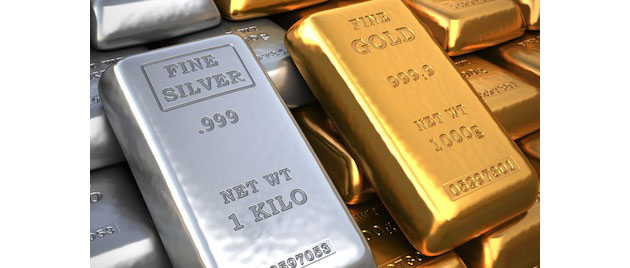The Energy Report: David, the price of uranium has been volatile recently. What's behind that?
David Sadowski: Spot prices ran in late 2014, touching $44/pound ($44/lb) as a handful of utilities entered the market, either expressing buying interest or buying material outright. At the time, supplies available to the market for spot delivery were quite thin, leading to upward pressure on prices.
But the price ran pretty quickly, and as the calendar and financial end-of-year approached, we saw a big drop-off in volume as buyers retreated to the sidelines. The timing caused the price to move around drastically. This type of thing isn't entirely unusual, if you pull up a 10-year price chart. Right now, the spot price is about $37/lb, and the long-term contract price, which has been a lot less volatile, is $49–50/lb.
TER: Do the sanctions on Russia have any effect on the price?
DS: Right now I would say no, but they could. Russia controls a huge chunk of global uranium supply. Not all of it leaves the country, because Russia has a decent-size, 25 gigawatt (25 GW) domestic nuclear fleet. That's about 7% of global operating capacity. But a lot of that material does get exported both to other countries and to client states, where Russia has constructed reactors and is under contract to supply fuel for the life of a unit under the build/own/operate model.
"We see a very high takeout potential; that's one of the key reasons we rate Fission Uranium Corp. a top pick."
Quantifying the uranium supply from Russia, we estimate about 8 million pounds per year (8 Mlb/year) is mined annually within Russia, 60 Mlb is mined in Kazakhstan, which has very close ties to Russia, and the country has another 15–20 Mlb from underfeeding and coming out of stockpiles. That's about 45% of the global supply of natural uranium right there. On the enrichment side, a key part of the fuel cycle, Russia controls about half the world's operating capacity. It contributes roughly 20% of the U.S. requirements for enriched uranium product, and about a third of the European Union's. Remember, about 11% of the world's power comes from nuclear. Russia's dominant position in the nuclear fuel cycle could be key if it chooses to exert pressure on the West. If it chooses to cut back on exports, that would have a very positive impact on prices, in our view.
TER: I read that Rosatom is talking about renewing cooperation with the U.S. on nuclear material. Is that anything substantial?
DS: I would say, with the state of Russia–U.S. relations at the moment, we're very unlikely to see another agreement such as the U.S.–Russian Highly Enriched Uranium (HEU) deal, which saw the downblending of about 20,000 warheads and supplied U.S. reactors with fuel from those warheads for about two decades. It was good to see the two major nuclear powers cooperating. But I wouldn't expect another major nuclear or uranium-related deal any time soon because of the relationship today. There are also other geopolitical and economic disincentives that should cause Russia to hesitate from starting a similar HEU program.
TER: Is the price volatility going to continue? What is your forecast for 2015?
DS: 2015 should be a good year. We think we're off the bottom, and we expect utilities to pick up buying activity with renewed annual budgets in the first part of this year. We've already seen increased interest, with Duke Energy Corp. (DUK:NYSE) notably buying 150,000 pounds (150 Klb) and others talking about midterm deals. We're looking for both term and spot buying activity to increase. With spot supplies thinned, buyers will be less likely to dump material at fire sale prices, so we should see the price move upward. The utilities, after all, have been pretty quiet the past couple of years. They need to buy to cover future needs—particularly to meet requirements into 2018 and beyond. Given that the contracting window starts three to four years in advance, we're into that period now.
We project spot prices to average $38/lb in 2015. But I think there's real potential for spot to rocket through the $40/lb level before the year is out. We've all seen how quickly spot can move. With utilities poised to jump back in and supplies thinned by throttle-backs at mines, the spring is coiled pretty tightly. It's just hard to time the move. With another supply side shock—like a win by ConverDyn Corp. (private) in its suit against the U.S. Department of Energy, which is dumping into the market, reduced supply out of Russia in response to Western sanctions, or a disappointment in the planned ramp-up at Cigar Lake, which we think is a 50/50 bet—spot prices could skyrocket.
TER: Nuclear power plants in the U.S. seem to be closing down gradually. What effect is that having on companies in the uranium space?
DS: In the U.S., we've seen some half-dozen reactors announce shutdowns. More are possible, but not many. The most vulnerable are small, old, single-reactor plants with high operating expenses relative to typical U.S. plants, and reactors located in unregulated merchant electricity markets where they get outcompeted by cheap natural gas power plants. Post-Fukushima safety upgrades are also playing a small role at reactors with slim operating margins and short remaining operating lives. The closures will be offset by five new reactors under construction at Watts Bar, V.C. Summer and Vogtle.
"If Russia chooses to cut back on uranium exports, that would have a very positive impact on prices."
In the U.S., nuclear power represents about 100 GW of operating capacity. We expect that to pick up slightly over the next several years. Aside from a small amount of inventory that was potentially being sold as a result of shutdowns, things remain really positive for U.S. uranium demand. We continue to expect the U.S. to be the top dog in the world of nuclear power until surpassed by China in the mid-2020s, so uranium investors shouldn't be overly concerned by U.S. shutdowns.
TER: What are the prospects for restarting Japanese nuclear power plants?
DS: We expect at least four restarts this year—Sendai 1 and 2 and Takahama 3 and 4—and there is potential to get several more by year-end. We expect the pace of restarts to accelerate after the first handful, as utilities and the Japanese Nuclear Regulation Authority learn the process of how best to submit and approve restart applications. It is, after all, a brand-new process for both sides.
Further out, at least a third of the pre-Fukushima 54-reactor fleet should return to operation. Another third is more uncertain, based on the reactor locations and design of the units. The world's biggest plant, Kashiwazaki-Kariwa, is a good example. But we continue to view the restart of reactors as a critical psychological event for the uranium space. It's unlikely to result in an immediate jump in the uranium price or a surge in contracting by Japanese utilities, but it should provide comfort that Japan won't dump its significant inventories, and that delivery deferral requests will slow down further.
TER: You said it's not likely to result in a jump in new orders. Is that because the utilities are using up the stockpiled inventories?
DS: That's right. We expect the utilities in Japan to slowly chew through their existing inventories, for the most part.
TER: Is Japan still deferring fuel deliveries?
DS: Getting firm data on that subject is a little tricky, but indications from producers are that Japanese utilities have stopped requesting new deferrals. Undoubtedly, some of the material destined for delivery in 2015 will now be delivered in the future—or perhaps not at all. But new requests for deferrals, based on what we're hearing, have dwindled. And that's a positive sign. It shows that Japan's utilities see nuclear restarts as inevitable.
TER: What companies are your top picks today?
DS: Our top picks in the uranium space are Fission Uranium Corp. (FCU:TSX), Denison Mines Corp. (DML:TSX; DNN:NYSE.MKT) and Ur-Energy Inc. (URE:TSX; URG:NYSE.MKT). We also like Uranium Participation Corp. (U:TSX), the world's only physically backed fund, for pure uranium exposure without the exploration and mining risk.
On Fission, we have a $2.20/share target price. We like the stock for a bunch of reasons, including the recent maiden resource at Patterson Lake South (PLS), which totaled 105 Mlb grading 1.5% U3O8—a stellar outcome and the first time we have firm numbers on the project from a reliable engineering firm. Our model suggests that even in a $40/lb uranium price environment, and assuming development costs of $1.2 billion and production startup by the mid-2020s, Patterson throws off heaps of cash flow and generates a positive net present value.
This increased visibility on excellent economic and standalone viability should ramp up takeout potential for Fission. The project is the world's last known, high-grade, open-pittable uranium asset, which drives massive scarcity value. Juniors that own the best undeveloped asset in any commodity usually don't last long before getting taken out. Looking ahead, we expect more good drill results on the main trend this year, as well as exciting targets off-trend. Plus, we're hopeful for a maiden preliminary economic assessment late in 2015.
TER: Fission Uranium's PLS lease in the Athabasca is consistently described as superlative. Why hasn't the company been a takeout target?
DS: There are a few ways to explain this. Weakness in the uranium price is an obvious explanation, as buyers don't feel the need to rush out and buy more pipeline pounds when the revenue potential is not clearly evident. Another reason is some skepticism about the lateral continuity of mineralization, since the majority of holes drilled prior to last year's summer program were vertical. These concerns should be eased by the successful angled holes drilled in 2014.
Some buyers may also want to see a completed NI 43-101 resource estimate and the full document before buying the company. In fact, it's rare to see a major buy a junior in the pre-resource stage. Rather, the likes of Cameco Corp. (CCO:TSX; CCJ:NYSE) have used the junior space as an extension of an exploration arm, derisking potential acquisition targets without spending any money. A good example is Hathor Exploration Ltd., which had completed its third resource at Roughrider before the initial Cameco bid came. Fission, on the other hand, just completed its maiden resource, which is nearly double the size of the Roughrider resource.
Standalone viability may also be a pushback. Detractors have long pointed to Patterson's lack of a nearby mill as making the project a nonstarter. Potential complications with draining the lake in an open-pit scenario have also been suggested, but historic analogs imply this is not an insurmountable hurdle.
"We expect utilities to pick up buying activity with renewed annual budgets in the first part of 2015."
In light of these issues, Fission's market cap may be viewed as too high to justify the potential cash flows and development risks. Just for the record, we're speculating here, and we actually don't share these concerns. In fact, our model suggests an open-pit mine would generate significant free cash flow even at modest uranium prices. We see a very high takeout potential, and that's one of the key reasons we rate Fission a top pick.
TER: Do you think Fission can continue to produce good results?
DS: We think so. The $10 million ($10M) budget is expected to fund exploration of more than 20,000 meters in 63 holes, split almost evenly between the main Triple R deposit and regional exploration. We're particularly excited about the regional program's potential for discovering new zones. Forest Lake, about 8 kilometers southeast of Triple R, has been one of our favorite targets on the property since we launched research coverage on Fission. The area will receive the most regional attention, with 22 holes this winter.
TER: What are your thoughts on Denison?
DS: We have a $1.90/share target price on our second top pick. We are excited by the ongoing, aggressive $10M drill program at Gryphon, one of the best discoveries in the past 10 years. The Gryphon zone is deep but very high grade and hosted within stable basin rock, suggesting a future mine would require very little, if any, rock freezing near the ore. Growth potential is also excellent. We expect a maiden resource could be released as early as later this year, which should surprise the market on contained metal. This would also boost visibility on Gryphon's development potential in combination with Denison's Phoenix deposit, located only a couple kilometers to the south. Phoenix already has the world's highest grading resource.
Outside of Gryphon, the company should receive a few million dollars in cash flow as part of the toll milling agreement involving the Cigar Lake Joint Venture and Denison's 22.5%-owned McClean Lake mill. We're also looking for an announcement on Denison's often forgotten African assets, which the company could dispose of via a spinout or outright sale if market conditions permit.
TER: And your other top picks?
DS: Our top pick among producers is Ur-Energy, where we also have a $1.90/share target price. The great thing about Ur-Energy is that it is well positioned in all uranium price environments. Cash costs at the Lost Creek in-situ leach (ISL) mine are just over $20/lb, and for 2015, the company has 630 Klb in contracted sales priced at $50/lb. That's a strong operating margin irrespective of what the uranium price does. If spot prices continue to strengthen, the company has the flexibility to increase production to a full 1 Mlb/year and sell the balance into the spot market, providing good leverage to a rise in price environment as well.
Further out, the potential to bring the Shirley Basin satellite operation online with minimal capital expenditure (capex) could double the output to 2 Mlb/year. This is really a company that, despite some hurdles early on, like a very long permitting timeline and some issues with wastewater last year, is well positioned to capitalize on uranium's rosy future. Because of that, we see the company as being a good takeout candidate, or even being a buyer of other U.S. ISL assets.
TER: U.S. uranium demand is more than 10 times as great as domestic production. Ur-Energy is a U.S.-based company and an in situ recoverer. Does it have a competitive advantage for those reasons?
DS: There's a small advantage to being a producer in the home market on pricing if utilities start to put a greater risk premium on supply source. Pounds located down the road are worth more to a U.S. utility than those in the ground in Russia because of delivery risk.
But generally speaking, the benefit of being a "home supplier" is overestimated. U.S. utilities have been buying from other countries for decades, and countries like Russia, Namibia and Kazakhstan have been very reliable suppliers. Also, product quality is not in question, given that uranium in the drum is highly fungible if it meets international ASTM standards. That's not to say location is not a factor in pricing at all.
TER: What about Uranium Participation?
DS: Uranium Participation is a great, safe way to play the space. Our target is $6/share, which assumes a target spot uranium price of $39/lb and that the stock trades in line with the net asset value (NAV), as it has averaged historically. For reference, at a uranium price assumption of $45/lb, our target is $7/share, and at $50/lb, it's $7.50/share. That's without any premium to NAV ascribed by the market, which will often occur if investors believe the price rise is defensible. You can see how quickly shares of Uranium Participation could rise.
TER: There has been a merger in the uranium space recently, Energy Fuels Inc. (EFR:TSX; UUUU:NYSE.MKT; EFRFF:OTCQX) and Uranerz Energy Corp. (URZ:TSX; URZ:NYSE.MKT). Will it have an impact on the uranium space generally?
DS: The merger could spur additional deals in the space, which have slowed down somewhat in the last year or two. There is a lot of logical consolidation potential remaining in the U.S., particularly among the assets amenable to ISL production. The company that's most affected in our coverage universe is Ur-Energy. Given the success that Ur-Energy has had in ramping up Lost Creek, we see it as moving into a position of equity price and balance strength. It could facilitate takeouts of some of the smaller ISL players in Wyoming over the next 12–18 months.
On the flip side, as Lost Creek proves its technical worth, wastewater issues diminish and the company provides clear demonstration of stable cash flow, Ur-Energy is a logical takeout candidate, too. Bigger companies now operating ISL in the U.S. include Cameco, Uranium One Inc. (UUU:TSX) and, assuming the merger closes successfully, Energy Fuels, with Uranerz's Nichols Ranch mine now in the stable.
TER: Is there another company you can comment on?
DS: UEX Corp. (UEX:TSX) has gotten beaten up alongside its uranium peers. While there's been renewed fascination with Athabasca Basin explorers, we think the realization among investors that not all high-grade pounds are created equal has weighed on the company.
"There's real potential for spot to rocket through the $40/lb level before the year is out."
To be specific, companies like Fission have benefited from defining near-surface, high-grade pounds, whereas UEX, with its massive Shea Creek resource just down the road from Fission, trades at pennies on the dollar by comparison. We don't think it's fair. Although UEX is deeper and not entirely hosted in stable basement rock, it's a great call option on higher uranium prices. It's the third biggest, undeveloped asset in the basin after Fission's Triple R resource and Cameco's Millennium project. We also think the market is undervaluing the potential at Hidden Bay on the east side of the basin.
TER: In spite of all its assets both in ground and in its relationships, UEX is trading near its 52-week low. What will it take to boost the share price?
DS: Obviously, a pickup in the uranium price and/or broader industry sentiment will help, but the key thing is success on the upcoming program at Hidden Bay, located on the infrastructure-rich east side of the basin within a stone's throw from Cameco's underutilized Rabbit Lake mill.
In early January, UEX launched a $2.5M, 30-hole, winter drilling campaign designed to test four shallow, basin-hosted targets. What differentiates this program is the amount of data used to generate the targets. UEX has access to 1,800 historic drill holes that were drilled through shallow Athabasca sandstones and basin nonconformity, but were abandoned once basement rock was reached—such was exploration dogma at the time. Given the high number of basement-hosted discoveries over the past 15 years, such as Millennium, Centennial, Roughrider and PLS, the historic operators were overlooking the significant underlying potential at Hidden Bay. We think there's a good chance for drilling success over the next few months.
TER: Can you address a final company?
DS: Kivalliq Energy Corp. (KIV:TSX.V) had a tough year in 2014 and traded in line with much of the uranium equity group, which had trouble tapping the equity markets. Accordingly, exploration work across the space, save for a handful of well-capitalized companies, has slowed down. Kivalliq is a good example of this. Despite the throttle-back on budgets, the company has impressed us with its ability to drive value with a low-cost program at the flagship Angilak project in Nunavut, as well as some encouraging early-stage geochem results at the Genesis project in northern Saskatchewan, where work has been funded by Roughrider Exploration Ltd. (REL:TSX.V).
TER: Are investors undervaluing Kivalliq's uranium portfolio?
DS: A famous quote in our industry is that "the markets are never wrong." But investors often forget the quality of Angilak. It features the highest-grade significant resource in the world outside the Athabasca Basin. Mineralization starts near surface and is hosted in stable rock with good metallurgy. Yes, the project is located in Canada's remote north, but the Nunavut territory is pro-uranium, and AREVA SA (AREVA:EPA) is blazing the uranium permitting trail at its more advanced-stage Kiggaviq project. As Angilak has immense growth potential, we think it will eventually demonstrate production viability.
TER: In the Raymond James uranium industry analysis issued in October, it was observed that "equities and fundamentals have diverged." What opportunities are in this for investors?
DS: We were describing the different paths in the space. The spot price was rising and supply/demand fundamentals were improving, whereas equities got pummeled after highs touched earlier in the year. This is still the case. Spot is 30% above its bottom, and yet indicator stocks like Cameco recently reset 52-week lows, and the share price of the UPC fund (Uranium Participation) is implying a discount to its NAV.
The downdraft in oil prices has also had a dampening effect on uranium stocks, widening the divergence, despite the fact there's no relationship and very little global competition between the two commodities. Nuclear, after all, is a stable generator of emissions-free baseload power, the plants can operate reliably and inexpensively for more than 60 years, and investment decisions on new reactors are made on these criteria.
We expect this year to benefit uranium equities, as a series of developments should support a positive story for prices in the medium term, derisking a trajectory toward the $70/lb equilibrium price level, which is the level where enough development is incentivized on new mine supply to meet long-term demand. These 2015 developments include the long-awaited restarts of Japanese reactors, a surge of new grid connections in Asia, further rationalization on the supply side and, most critically, a wave of nuclear utility buying after a long hiatus.
Accordingly, we are quite confident in a reversal in the divergent trend. The stocks are washed out and have a limited downside risk, but the upside potential, with several tailwinds brewing on the macroeconomic level, appears very compelling. We think investors should be buying these stocks right now.
TER: David, thanks for your time.
 David Sadowski is a mining equity research analyst at Raymond James Ltd. covering the uranium and junior precious metals spaces. Prior to joining the firm, Sadowski worked as a geologist in western Canada with multiple Vancouver-based junior exploration companies, focused on base and precious metals. He holds a bachelor's degree in geological sciences from the University of British Columbia.
David Sadowski is a mining equity research analyst at Raymond James Ltd. covering the uranium and junior precious metals spaces. Prior to joining the firm, Sadowski worked as a geologist in western Canada with multiple Vancouver-based junior exploration companies, focused on base and precious metals. He holds a bachelor's degree in geological sciences from the University of British Columbia.
Read what other experts are saying about:
Want to read more Energy Report interviews like this? Sign up for our free e-newsletter, and you'll learn when new articles have been published. To see recent interviews with industry analysts and commentators, visit our Streetwise Interviews page.
DISCLOSURE:
1) Tom Armistead conducted this interview for Streetwise Reports LLC, publisher of The Gold Report, The Energy Report, The Life Sciences Report and The Mining Report, and provides services to Streetwise Reports as an independent contractor. He owns, or his family owns, shares of the following companies mentioned in this interview: None.
2) The following companies mentioned in the interview are sponsors of Streetwise Reports: Fission Uranium Corp., UEX Corp., Energy Fuels Inc. and Uranerz Energy Corp. The companies mentioned in this interview were not involved in any aspect of the interview preparation or post-interview editing so the expert could speak independently about the sector. Streetwise Reports does not accept stock in exchange for its services.
3) David Sadowski: I own, or my family owns, shares of the following companies mentioned in this interview: None. I personally am, or my family is, paid by the following companies mentioned in this interview: None. My company has a financial relationship with the following companies mentioned in this interview: None. I was not paid by Streetwise Reports for participating in this interview. Comments and opinions expressed are my own comments and opinions. I determined and had final say over which companies would be included in the interview based on my research, understanding of the sector and interview theme. I had the opportunity to review the interview for accuracy as of the date of the interview and am responsible for the content of the interview.
4) Interviews are edited for clarity. Streetwise Reports does not make editorial comments or change experts' statements without their consent.
5) The interview does not constitute investment advice. Each reader is encouraged to consult with his or her individual financial professional and any action a reader takes as a result of information presented here is his or her own responsibility. By opening this page, each reader accepts and agrees to Streetwise Reports' terms of use and full legal disclaimer.
6) From time to time, Streetwise Reports LLC and its directors, officers, employees or members of their families, as well as persons interviewed for articles and interviews on the site, may have a long or short position in securities mentioned. Directors, officers, employees or members of their families are prohibited from making purchases and/or sales of those securities in the open market or otherwise during the up-to-four-week interval from the time of the interview until after it publishes.




























































